אנו מתכבדים להציג כאן מאמר שנשלח אלינו ע”י פרופ’ יצחק גנזבורג מהאונ’ העברית המציג הסבר לאופן החדירה של נגיף הקורונה לריאות.
אנו מודים לפרופ’ גנזבורג על שליחת המאמר:
Polycations and polyanions in SARS-CoV-2 infection
I. Ginsburg1, E. Fibach2
The Hebrew University – Hadassah School of Medicine, 1The Faculty of Dental Medicine, 2Department of Hematology, The Ein-Kerm Campus, Jerusalem, Israel.
*Corresponding author at: Hematology, Hadassah University Hospital, Ein-Kerem, 91120, Jerusalem, Israel.
E-mail address:[email protected]
Abstract
We hypothesize that polycations, such as nuclear histones, released by neutrophils COVID-19 aggravate COVID-19 by multiple mechanisms: (A) Neutralization of the electrostatic repulsion between the virus particles and the cell membrane, thereby enhancing receptor-mediated entry. (B) Binding to the virus particles, thereby inducing opsonin-mediated endocytosis. (C) Adding to the cytotoxicity, in conjunction with oxidants, cytokines and other pro-inflammatory substances secreted by cells of the innate immunity system. These effects may be alleviated by the administration of negatively charged polyanions such as heparins and heparinoids.
Keywords
COVID-19, SARS-CoV-2, Therapy, Neutrophils, Polycations, Polyanions, Heparin
Introduction
The severe acute respiratory syndrome coronavirus 2 (SARS-CoV-2) is the etiological cause of coronavirus disease 2019 (COVID-19), the respiratory illness responsible for the current world pandemia (1).
The Hypothesis
In this short communication, we propose that polycations secreted following viral infection by the neutrophils may aggravate COVID-19 by several mechanisms that may be mitigated by the administration of negatively charged polyanionic drugs such as heparins and heparinoids.
Evaluation of the hypothesis
COVID-19 is initiated by viral infection of susceptible cells of the respiratory tract mainly by receptor (ACE2)-mediated endocytosis (2), followed by viral multiplication and, consequently, activation of the innate immune system. The latter involves mobilization of its cells by chemotaxis, their accumulation in infected areas such as the lungs, and secretion of various cytokines that are responsible for the severe consequences, and sometimes fatality, of the disease (the cytokine storm) (3).
COVID-19 is involved in excessive neutrophils and dysregulated neutrophil extracellular traps (NETs) (4). The latter are three-dimensional lattices of decondensed chromatin decorated with histones and antimicrobial proteins that are released from neutrophils upon stimulation (5). Pathogens, including respiratory viruses, induce NET formation that physically trap and kill them as part of the innate immune response (6).In access, NETs can mediated tissue damage and hypercoagulability (7) and they are associated with acute and chronic inflammation (8). In COVID-19, their dysregulated formation is thought to be associated with thrombosis (9)In addition to NET formation, neutrophils secrete a plethora of various cytokines, reactive oxygen and nitrogen species hypochlorous acid, lipase, and the membrane-penetrating agents phospholipase A2 and lysophosphate which act directly to permeabilize lung cells (10). They also secrete polycationic proteins such as histones, cathepsin, elastase, cationic proteinases and the Cathelicidin antimicrobial peptides, LL37, (11). We hypothesize that these polycations may have several effects that aggravate COVID-19.
(A) Both cells (12, 13) and viruses, including viruses of the Corona family (14), carry negative-charged domains on their surfaces that may result in electrostatic repulsion that mitigates infection. Polycations may neutralize negative charges on the virus and cell surfaces, reduce their electrostatic repulsion, and thereby, enhance the adsorption and entry of viruses by receptor-mediate endocytosis, thus, facilitating the spreading of the virus.
(B) Polycations have been shown to opsonize negatively-charged surfaces of cells, bacteria and viruses and facilitate their phagocytosis not only by professional phagocytes such as neutrophils and macrophages, but also by fibroblasts, endothelial cells and epithelial cells (15). A similar mechanism may facilitate opsonin-mediated endocytosis of SARS-CoV-2 to the lung epithelia in COVID-19.
(C) Many polycations are cytotoxic, adding to the deleterious effects on the lung epithelia of substances such as cytokines, reactive oxygen and nitrogen species as well as phospholipase A2 and lyso-phopspahyatides (15). Cell damage in COVID-19 may also be augmented by microbial co-infections: bacteriolysis caused by antibiotics or cationic lysozyme release non- the membrane-injuring and perforating agents (16).
The effects of the polycations might be inhibited to some extent by the administration of highly negatively charged polyanions such as heparins and heparinoids. Heparin is a member of a family of long, linear, highly sulfated heparans that have the highest negative charge density of any known biomolecule (17). This charge allows heparin to strongly interact with proteins, such as the serine protease inhibitor antithrombin-III that provides it with anticoagulant activity. However, hundreds of other biologically relevant, heparin-protein interactions with potential clinical significance have been described, including the ability to neutralize polycations released by neutrophils (18). For example, it has been reported that heparin binds histones and prevents histone-mediated cytotoxicity independent of its anticoagulant properties (19).
Heparin has been proposed as a therapeutic modality for COVID-19 mainly as an anticoagulant (20). Severe SARS-CoV-2 infection with acute lung injury is complicated with coagulopathy, and disseminated intravascular coagulation is involved in the majority of deaths (20). Therefore, The World Health Organization (WHO) recommended in these patients thrombo-prophylaxis with either unfractionated or low molecular weight heparin (https://www.who.int/publications/i/item/clinical-management-of-covid-19). However, in addition to anticoagulant, heparin possesses anti-inflammatory, anti-complement, immunomodulatory as well as anti-viral activities (21).
Anti-inflammatory effects of heparin were reported both in the vasculature and in the airway, which could beneficially affect COVID-19. They fall into two mechanisms (21): (A) Interaction with proinflammatory proteins. (B) Prevention of the influx and adhesion of inflammatory cells to the diseased areas.
As for its anti-viral potential, we suggest that heparin may neutralize the effect of polycations on the virus adsorption and entry. In addition, surface heparan sulfate has been demonstrated to be essential for entry and infectivity of human coronaviruses (22, 23), including the SARS-CoV-2 (24), by strongly binding to the spike protein thus facilitating the interaction of the virus with its receptor (23). Heparin may bind the spike protein and function as a competitive inhibitor for viral entry, thus decreasing infectivity. Interestingly, shorter-length heparins, comparable to those used in anticoagulation therapy, did not appreciably bind the spike protein (22, 24). Clinical trials aim to demonstrate the benefit of heparin therapy should, therefore, include evaluation of the disease course and time to virus clearance, markers of direct antiviral activity, rather than solely coagulation status (25). Despite this immense potential, no clinical data is yet available.
Conclusions
We propose that substances secreted by neutrophils, in addition to their direct cytotoxic effects, may enhance infection of lung cells, and thereby aggravate the disease, while the administration of heparin and heparinoids might have a therapeutic effect in addition to their anti-coagulating effect. Other agents of therapeutic value may be antioxidants such as ascorbate, N-acetyl cysteine, glutathione, and agents present in fruits and vegetables, and the proteinase inhibitor aprotinin, which may reduce the cytotoxic effect of various agents secreted by cells in response to the viral infection.
Acknowledgment
Supported by an endowment fund by the late Dr. SM Robbins, Cleveland, Ohio, USA.
Conflicts of Interest
The authors confirm that this article content has no conflict of interest.
References
[1] C. Huang, Y. Wang, X. Li, et al., Clinical features of patients infected with 2019 novel coronavirus in Wuhan, China, Lancet 395 (2020), pp. 497-506.
[2] W. Ni, X. Yang, D. Yang, et al., Role of angiotensin-converting enzyme 2 (ACE2) in COVID-19, Crit Care 24 (2020), p. 422.
[3] Y. Tang, J. Liu, D. Zhang, Z. Xu, J. Ji and C. Wen, Cytokine Storm in COVID-19: The Current Evidence and Treatment Strategies, Front Immunol 11 (2020), p. 1708.
[4] J. Wang, Q. Li, Y. Yin, et al., Excessive Neutrophils and Neutrophil Extracellular Traps in COVID-19, Front Immunol 11 (2020), p. 2063.
[5] T.A. Fuchs, U. Abed, C. Goosmann, et al., Novel cell death program leads to neutrophil extracellular traps, J Cell Biol 176 (2007), pp. 231-241.
[6] G. Schonrich and M.J. Raftery, Neutrophil Extracellular Traps Go Viral, Front Immunol 7 (2016), p. 366.
[7] T.A. Fuchs, A. Brill, D. Duerschmied, et al., Extracellular DNA traps promote thrombosis, Proc Natl Acad Sci U S A 107 (2010), pp. 15880-15885.
[8] A. Bonaventura, L. Liberale, F. Carbone, et al., The Pathophysiological Role of Neutrophil Extracellular Traps in Inflammatory Diseases, Thromb Haemost 118 (2018), pp. 6-27.
[9] E.A. Middleton, X.Y. He, F. Denorme, et al., Neutrophil extracellular traps contribute to immunothrombosis in COVID-19 acute respiratory distress syndrome, Blood 136 (2020), pp. 1169-1179.
[10] I. Ginsburg and R. Kohen, Synergistic effects among oxidants, membrane-damaging agents, fatty acids, proteinases, and xenobiotics: killing of epithelial cells and release of arachidonic acid, Inflammation 19 (1995), pp. 101-118.
[11] I. Ginsburg, Cationic polyelectrolytes: a new look at their possible roles as opsonins, as stimulators of respiratory burst in leukocytes, in bacteriolysis, and as modulators of immune-complex diseases (a review hypothesis), Inflammation 11 (1987), pp. 489-515.
[12] K.M. Lipman, R. Dodelson and R.M. Hays, The surface charge of isolated toad bladder epithelial cells. Mobility, effect of pH and divalent ions, J Gen Physiol 49 (1966), pp. 501-516.
[13] Y. Ma, K. Poole, J. Goyette and K. Gaus, Introducing Membrane Charge and Membrane Potential to T Cell Signaling, Front Immunol 8 (2017), p. 1513.
[14] S. Verma, V. Bednar, A. Blount and B.G. Hogue, Identification of functionally important negatively charged residues in the carboxy end of mouse hepatitis coronavirus A59 nucleocapsid protein, J Virol 80 (2006), pp. 4344-4355.
[15] I. Ginsburg, Cationic polyelectrolytes: potent opsonic agents which activate the respiratory burst in leukocytes, Free Radic Res Commun 8 (1989), pp. 11-26.
[16] I. Ginsburg, Multi-drug strategies are necessary to inhibit the synergistic mechanism causing tissue damage and organ failure in post infectious sequelae, Inflammopharmacology 7 (1999), pp. 207-217.
[17] R.J. Weiss, J.D. Esko and Y. Tor, Targeting heparin and heparan sulfate protein interactions, Org Biomol Chem 15 (2017), pp. 5656-5668.
[18] I. Ginsburg, M.N. Sela, A. Morag, et al., Role of leukocyte factors and cationic polyelectrolytes in phagocytosis of group A streptococci and Candida albicans by neutrophils, macrophages, fibroblasts and epithelial cells: modulation by anionic polyelectrolytes in relation to pathogenesis of chronic inflammation, Inflammation 5 (1981), pp. 289-312.
[19] K.C. Wildhagen, P. Garcia de Frutos, C.P. Reutelingsperger, et al., Nonanticoagulant heparin prevents histone-mediated cytotoxicity in vitro and improves survival in sepsis, Blood 123 (2014), pp. 1098-1101.
[20] N. Tang, H. Bai, X. Chen, J. Gong, D. Li and Z. Sun, Anticoagulant treatment is associated with decreased mortality in severe coronavirus disease 2019 patients with coagulopathy, J Thromb Haemost 18 (2020), pp. 1094-1099.
[21] L. Gozzo, P. Viale, L. Longo, D.C. Vitale and F. Drago, The Potential Role of Heparin in Patients With COVID-19: Beyond the Anticoagulant Effect. A Review, Front Pharmacol 11 (2020), p. 1307.
[22] J. Lang, N. Yang, J. Deng, et al., Inhibition of SARS pseudovirus cell entry by lactoferrin binding to heparan sulfate proteoglycans, PLoS One 6 (2011), p. e23710.
[23] A. Milewska, P. Nowak, K. Owczarek, et al., Entry of Human Coronavirus NL63 into the Cell, J Virol 92 (2018).
[24] S.Y. Kim, W. Jin, A. Sood, et al., Glycosaminoglycan binding motif at S1/S2 proteolytic cleavage site on spike glycoprotein may facilitate novel coronavirus (SARS-CoV-2) host cell entry, bioRxiv (Preprint) ( 2020).
[25] J.A. Hippensteel, W.B. LaRiviere, J.F. Colbert, C.J. Langouet-Astrie and E.P. Schmidt, Heparin as a therapy for COVID-19: current evidence and future possibilities, Am J Physiol Lung Cell Mol Physiol 319 (2020), pp. L211-L217.


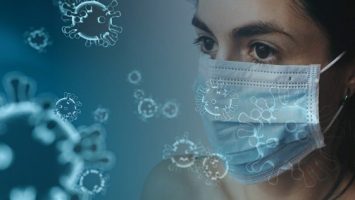
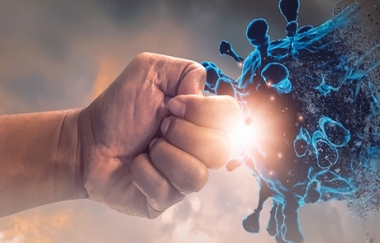
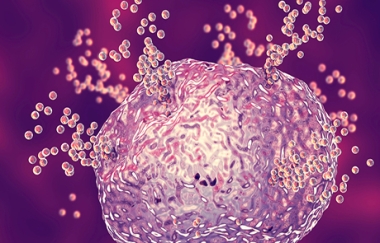

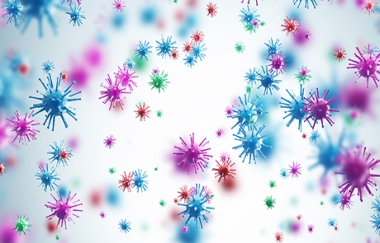



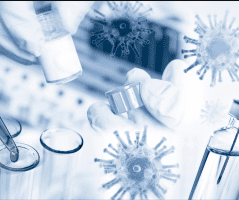







השאירו תגובה
רוצה להצטרף לדיון?תרגישו חופשי לתרום!